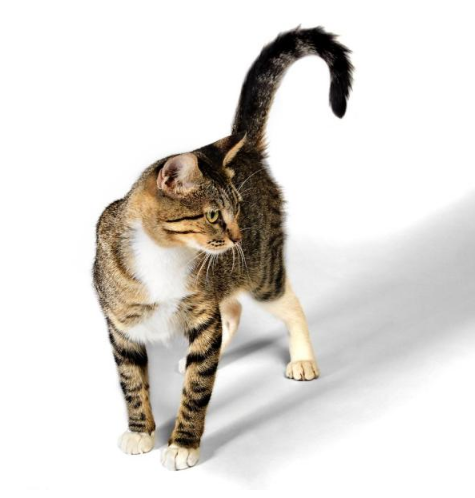11 Facts About Mommy Cats
Cats are fascinating creatures with two captivating eyes and four legs, as well as being intelligent, adaptable and highly playful creatures.
No matter if you love cats or simply appreciate felines, here are 11 facts about mommy cats you probably didn’t know before! Share these fun feline facts with your friends and family!
1. They’re Instinctive
Mother cats tend to take great pride in grooming their newborn kittens, licking their abdomens and anuses in order to assist in eliminating waste, while simultaneously stimulating digestion and keeping the kittens warm.
Cats’ maternal instincts often extend beyond raising their own litter of kittens or puppies to provide shelter to other animals such as kittens or puppies, domestic pets like guinea pigs, or other wild creatures like other cats’ litters; some even go so far as capturing other litters for rearing under their care.
If you encounter a pregnant cat and her litter, take great care not to disturb them in any way. Stressful environments may prompt her to act out with aggressive territorial and sexual instincts that may endanger both herself and the litter, according to Vet Info. Such actions could prove fatal.
2. They’re Social
Mom cats commonly employ vocal correction as a method for disciplining their kittens. For example, when her kittens start biting each other or becoming too rough in play, mom cats might give a gentle hiss as an alert that this behavior is inappropriate and need to stop immediately.
She grooms her kittens often, licking their abdomens and anuses to encourage waste removal from their bodies, according to The Spruce. This behavior is entirely normal.
She may lick them while they sleep to aid digestion and remove amniotic sacs that may form on their faces. She may also chew umbilical cords and consume placentas as is normal behavior – if you notice these behaviors contact your veterinarian as these could indicate health concerns.
3. They’re Sensitive
Cats possess 14 times superior sense of smell to those of humans, which explains their propensity to rub against people from nose to tail and mark them with their scent as a mark of ownership. Furthermore, this also explains why cats love licking armpits like it’s their massage!
Mother cats do everything in their power to ensure the wellbeing of their kittens from before birth onward. They select a safe place in which to give birth, and will fend off predators who try to harm their litter.
Mother cats may reject their entire litter if she detects that one or more are unhealthy, often as a result of mastitis, which causes swelling of mammary glands and pain when nursing kittens; when this happens, nursing becomes difficult and her body rejects what milk she attempts to provide – an urgent situation which must be handled immediately by a veterinarian.
4. They’re Adaptable
Cats have proven their adaptability by living in various climates – be it the freezing temperatures of Iceland or India’s hot humidity heat; even among busy Hong Kong streets they still find time for snuggle time with their humans! And although so adaptable they still love spending time cuddling close by.
Cats possess an additional third eyelid known as the nictitating membrane to keep dust and other debris from obstructing their vision when scoping out potential prey items.
Mother cats use purrs to communicate with their kittens, and recent research indicates they can distinguish among different kinds of kitten calls to determine when their baby needs food or help – just as newborn humans react to their caretakers’ voice, kittens also react in this same manner to hearing their mother’s purr.
5. They’re Smart
Cats may seem stubborn compared to dogs, but studies show they possess high intelligence levels. A 2011 research project discovered felines have 250 million neurons in their cerebral cortexes – more than any brown bear’s 231 million!
And their vision is absolutely extraordinary; their eyes can see twice as far, with improved low light sensitivity.
And they pick up on our body language. In their first eight weeks of life, kittens should remain with their mom so she can teach them how to interact with people and other animals, while nursing every 2-3 hours as part of an important socialization program that will ensure no issues later on with socialization or their immune systems.
6. They’re Affectionate
Cats are well known for their ability to convey emotions with their eyes in subtle ways. For example, when a mother cat displays her belly to her kittens it signifies trust and affection; hence why so many people love cats.
Female cats will search for cozy and quiet areas to give birth. She’ll use her tongue to clean each baby clean of amniotic fluid and placental tissues, before chewing up and swallowing its umbilical cords as soon as it has delivered.
Your cat may rub her body against you to mark its territory, while moving its paws in a pattern similar to bread dough kneading is actually left over from nursing as a way of stimulating milk flow and keeping its babies warm, as well as showing its affection.
7. They’re Adaptable
Cats are remarkable creatures; they thrive in environments as varied as Iceland’s frozen icecaps or Hong Kong’s bustling streets, adapting easily to life with humans as well.
Kittens need lots of milk in order to reach maturity; though it may be tempting to bottle feed them, this can be highly dangerous to their health; kittens require food every 2-3 hours!
Kittens need help peeing and pooping on their own, so mom cats provide essential assistance by licking them. Cats also knead with their front paws during nursing sessions to promote milk flow as a source of comfort, while their special sense of smell and eyesight surpass that of humans – they have over 180-degree vision even in low light environments!
8. They’re Adaptable
No matter their surroundings – from Iceland’s freezing temperatures to India’s heat or Hong Kong’s bustle or rural plains in Iowa – cats thrive worldwide among people of different cultures and lifestyles, making them well-suited to living inside homes around the world!
Cats have an ability to communicate through various purr patterns, such as when they’re hungry. Additionally, cats have their own special way of saying hi by touching noses!
research has discovered that female domestic cats respond appropriately to kitten calls of different urgency levels, much like how human babies and their caregivers develop strong bonds over time.
10. They’re Adaptable
Cats are remarkable creatures; they adapt well to almost every environment from Iceland’s cold temperatures all the way up to India’s scorching sun.
Kittens require at least 2-3 feedings each day from their mom cat, so they won’t let too much time pass between nursing sessions. Without enough nutrients being taken in by a kitten she may suffer serious health complications in later life.
Cats devote up to 50% of their day grooming themselves and marking their territory by doing so. Cats with extra toes are known as polydactyls; the condition can be genetic.
One interesting fact to keep in mind about kittens from the same litter is that their fathers may differ, due to only needing one sperm per egg to fertilize its fertilization process; therefore, if their mom cat mates with multiple toms during a heat cycle close together then her eggs could have different fathers!






